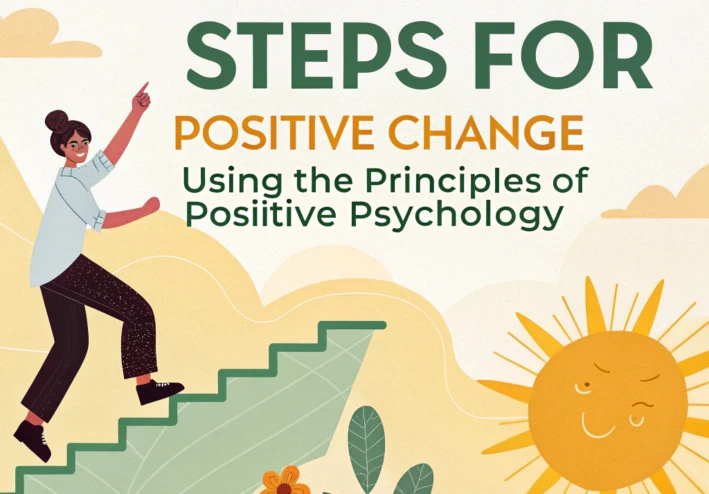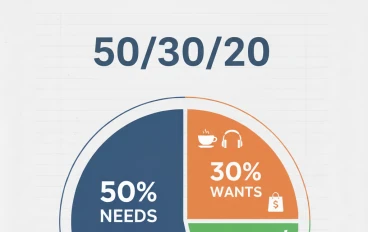
10 Practical Steps for Positive Change Using the Principles of Positive Psychology
1. Introduction: Why Do We Need Positive Change?
In the whirlwind of modern life, many people feel trapped in routines, constant stress, and repeated disappointments. Some struggle to take even a single step toward their goals, while others wonder why some individuals thrive during crises while they collapse under pressure.
The answer lies in positive change—not as a fleeting moment of motivation, but as a conscious process of building a stronger, more adaptable mindset. Positive psychology provides proven scientific tools to turn the concept of positive thinking into a daily lifestyle that leads to long-term transformation.
2. How Positive Psychology Supports Real Change
Positive psychology is not limited to motivational slogans or temporary happiness. Instead, it focuses on:
Identifying personal strengths rather than magnifying weaknesses.
Building positive habits that enhance mental health.
Reframing crises into opportunities for growth.
Encouraging action through realistic, practical steps.
This approach does not ignore challenges but helps us face them with renewed energy and creativity.
3. Step One: Self-Awareness and Discovering Strengths
Every meaningful change starts with awareness.
Ask yourself: What are my core values? What makes me unique?
Write down your strengths (such as patience, adaptability, or communication skills).
Acknowledge your weaknesses, but don’t dwell on them.
Positive psychology emphasizes investing in strengths rather than chasing perfection. For example, if you are a skilled writer, focus on using this ability to advance your career or express yourself, instead of obsessing over areas you dislike.
4. Step Two: Practicing Daily Gratitude
Gratitude is one of the most powerful tools for rewiring your mindset.
Keep a journal where you write three things you are grateful for every day.
These can be simple—like a morning cup of coffee or a supportive friend.
Gratitude shifts your focus from scarcity to abundance and from worry to contentment.
Research shows that grateful individuals enjoy greater happiness and improved sleep.
5. Step Three: Cultivating Realistic Optimism
Optimism doesn’t mean ignoring difficulties—it means facing them with hope.
Losing a job isn’t the end; it can be the start of a new opportunity.
Facing illness may signal the need to live more healthily.
Realistic optimism inspires hope while also encouraging you to prepare for challenges with practical solutions.
6. Step Four: Reframing Negative Thoughts
Negative thoughts act like dark glasses that distort reality. Reframing helps you see things differently.
Instead of saying: “I’m a failure,” say: “I’m learning from this experience.”
Replace: “Life is hard,” with: “Life is full of challenges that will make me stronger.”
Reframing doesn’t change reality but changes your perception—and that makes all the difference.

7. Step Five: Setting Small, Achievable Goals
Big goals can feel overwhelming, so break them down into manageable steps:
If you want to lose 20 pounds, start with a 15-minute daily walk.
If you want to learn a new language, dedicate 10 minutes a day to vocabulary.
Small wins create momentum, increasing confidence and motivation for bigger goals.
8. Step Six: Celebrating Daily Achievements
Too often, people dismiss small victories, yet they are the foundation of transformation.
Celebrate completing a minor work task.
Reward yourself for sticking to exercise for one day.
Record these successes in a journal.
Small celebrations generate big energy, turning the journey of change into something joyful rather than exhausting.
9. Step Seven: Building Positive and Supportive Relationships
Strong relationships are the backbone of psychological well-being.
Surround yourself with positive, encouraging people.
Minimize exposure to negative, energy-draining individuals.
Remember: social support reduces stress and boosts resilience.
Healthy relationships are not just company—they are a safety net that lifts you when you fall.
10. Step Eight: Practicing Mindfulness and Meditation
Mindfulness is not a luxury but a necessity in a noisy world.
Practice deep breathing for five minutes daily.
Try meditation by focusing on the present moment without judgment.
Use apps that guide you through mindfulness exercises.
These practices reduce anxiety, enhance clarity, and promote inner peace.
11. Step Nine: Developing Resilience in Times of Crisis
Resilience is the ability to bounce back after setbacks.
Focus on lessons learned rather than mistakes made.
Remind yourself that every crisis is temporary, not permanent.
Visualize yourself stronger and wiser after overcoming challenges.
Resilience is not only innate—it is a skill you can cultivate through experience and practice.
12. Step Ten: Making Positivity a Lifelong Habit
Positivity is not a temporary decision—it’s a lifestyle.
Incorporate gratitude and optimism into your daily routine.
Train yourself to notice goodness in even the smallest details.
Commit to exercise, healthy eating, and proper rest.
When positivity becomes a habit, change is no longer fleeting—it becomes a permanent transformation.
13. Real-Life Stories of Positive Change
A young man who lost his job during an economic downturn used his digital skills to start a successful freelance career.
A woman overcame depression through daily gratitude practice and later launched a community initiative to help others.
Someone struggling with anxiety learned meditation and resilience, becoming calmer and more productive.
14. Extra Tips to Accelerate Change
Avoid comparing yourself to others.
Track your progress to appreciate your growth.
Exercise regularly to refresh body and mind.
Learn to say “no” to protect your time and priorities.
Remember: transformation is a marathon, not a sprint.
15. Conclusion: Creating Lasting Transformation
Positive change is not magic or a one-time event—it is the result of small, consistent steps that build a stronger, more resilient self. Positive psychology gives you the tools to reshape your life: self-awareness, gratitude, optimism, supportive relationships, resilience, and celebrating progress. By following these ten steps, your life will no longer feel like a chain of obstacles but a journey filled with opportunities for growth and genuine transformation.






































